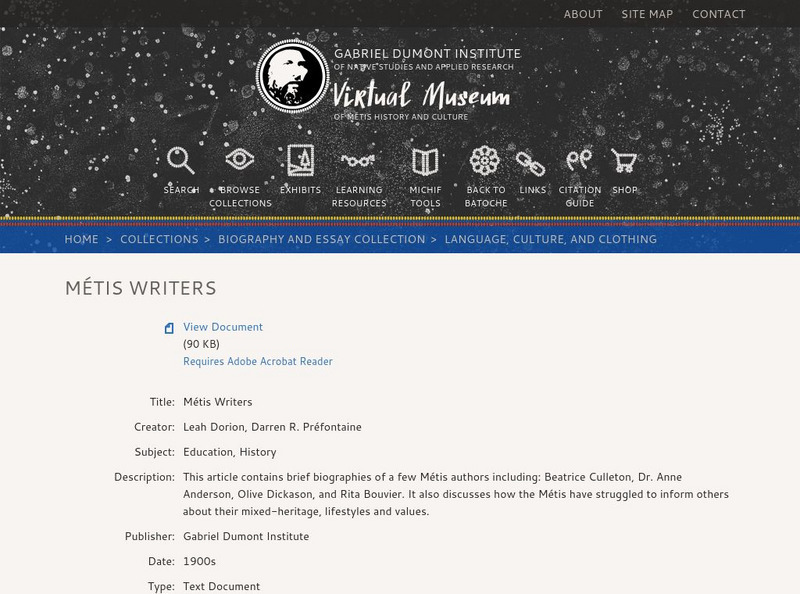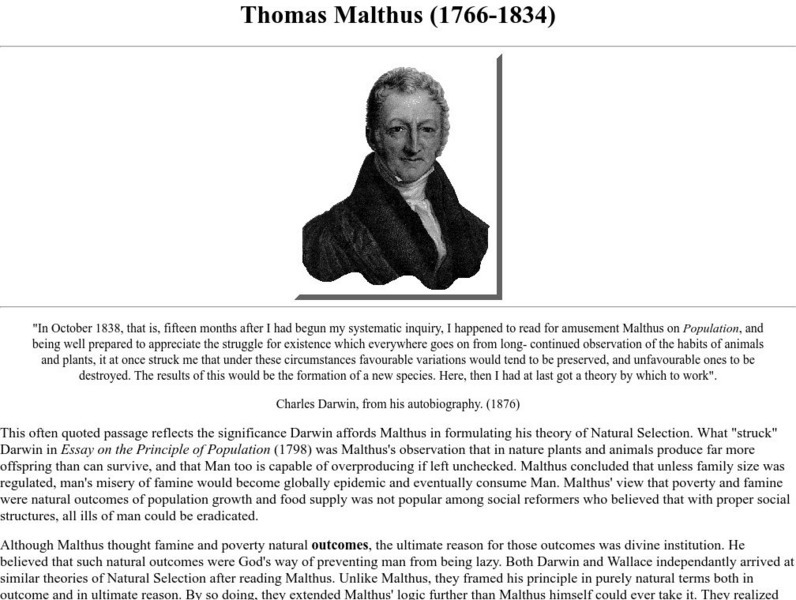Smithsonian Institution
National Museum of Natural History: The Canela Indians
Journey to Brazil and visit the Canela Indians. Learn all about their culture and view artifacts and video footage.
Smithsonian Institution
National Museum of Natural History: Relative Dating in Archaeology [Pdf]
Activities for the classroom that teach about stratigraphy and seriation, two methods used in the relative dating of objects in archaeology.
Smithsonian Institution
National Museum of Natural History: This Dynamic Planet
Research and explore past earthquake and volcanic activity on this interactive world map. User can manipulate which notable events and other map characteristics to view depending on the type of study being done.
Smithsonian Institution
National Museum of Natural History: Structuralism Basic Premises
Excellent source for structuralism and its tenets and premises. Provides key works, methodologies, and criticisms. Thorough website.
Smithsonian Institution
National Museum of Natural History: Ocean Planet: Ocean Currents
The Ocean Planet exhibit at the Smithsonian explains the general features of ocean circulation. A general look at upwelling, deep water, and currents are combined for an overall view.
Australian Museum
Australian Museum Society: Arthropods
A description of what arthropods actually are and a discussion of their origin, as well as some info on research.
The British Museum
British Museum: Egyptian Life
Students learn about a day in the life of two ancient Egyptian families. They also explore paintings to learn more about the life of a wealthy nobleman in ancient Egypt. Afterwards, they can play Senet, a popular Egyptian game.
Scholastic
Scholastic History Mystery: National Parks 2: The General Sherman Tree
Students try to guess the mystery subject Carlotta Facts, the History Mystery Museum's professor, is studying. They read the clues, do some online and offline research, and then attempt to identify the game's mystery subject, the General...
University of California
Ucmp: Aves Life History and Ecolog
University of California Berkeley offers a good discussion of the natural role that birds play and the importance of this role to man.
University of Florida
Florida Museum: South Florida Aquatic Environments: Introduced Species
The transport of living plants and animals to areas beyond their native range has been practiced by human beings for thousands of years. While some introductions are intentional, others occur by accident or happenstance. Regardless of...
Canadian Museum of Nature
Canadian Museum of Nature: Natural History Notebooks
A great reference source for a variety of vertebrate and invertebrate animals. This exhaustive resource also has some prehistoric extinct animals that students can compare to their living counterparts to increase their understanding of...
University of California
Ucmp: Life History and Ecology
Learn how sponges eat, grow, reproduce on this colorful page.
American Museum of Natural History
American Museum of Natural History: African Ethnography
The Anthropology Division's African collection is extensive in terms of geographic coverage. It includes North Africa, West Africa, and Madagascar, although its greatest concentration of material is from central and southern Africa. The...
Smithsonian Institution
National Museum of American History: Separate Is Not Equal: The Quest for Education
Part of a larger piece on Segregated America, this section focus is on the commitment and perseverance of African Americans in the post-Civil War South to overcome the obstacles standing in the way of an education. Offers teachers and...
Other
Amon Carter Museum: Encountering Texas (1846 1856)
Three early American artists captured the landscape of the unknown frontier which slowly became the state of Texas.
Gabriel Dumont Institute
Virtual Museum of Metis History and Culture: Metis Writers
Metis writers are profiled in this document. Their works of fiction most often addressthe complicated nature of being mixed-heritage, finding acceptance of that fact, and fighting racism.
Khan Academy
Khan Academy: Arts and Humanities: Art of Asia
A landing page for a course on the art history of Asia.
Georgia State University
Georgia State University: Hyper Physics: Amethyst
This colorful site contains pictures of amethyst crystals that are displayed in the Smithsonian Museum of Natural History.
University of California
Ucmp: Thomas Malthus
University of California Berkeley offers a description of how Malthus' book "Essay on the Principle of Population" influenced Darwin and Wallace while they worked on their theories of natural selection.
Regents of the University of Michigan
Animal Diversity Web: Peromyscus Eremicus (Cactus Mouse)
The Animal Diversity Web describes the natural history of the cactus mouse, including its geographical range, physical characteristics, natural habitat, reproduction, and behavior.
Alabama Learning Exchange
Alex: Wandering Alabama
This instructional activity is a fun fact gathering mission! Alabama is rich in history, museums, natural and manmade attractions, and some just plain wacky attractions. Learners will work in collaborative groups to create a guide to...
American Museum of Natural History
American Museum of Natural History: O Logy: A Sea of Questions About Mangroves
An engaging piece featuring questions that scientists ask when they are researching the seas. Click on the red asterisks and discover even more information!
University of California
Ucmp: What Is a Sabertooth?
A good review of the natural history of the extinct species, the Sabertooth. Includes pictures of bones of this animal.
American Museum of Natural History
American Museum of Natural History: Amazing Albedo
This lesson is a lab in which young scholars use thermometers, white and dark paper, and lamps to measure differences in albedo between the light and dark materials. Connections are made to albedo in Antarctica.

![National Museum of Natural History: Relative Dating in Archaeology [Pdf] Lesson Plan National Museum of Natural History: Relative Dating in Archaeology [Pdf] Lesson Plan](https://static.lp.lexp.cloud/images/attachment_defaults/resource/large/FPO-knovation.png)


















